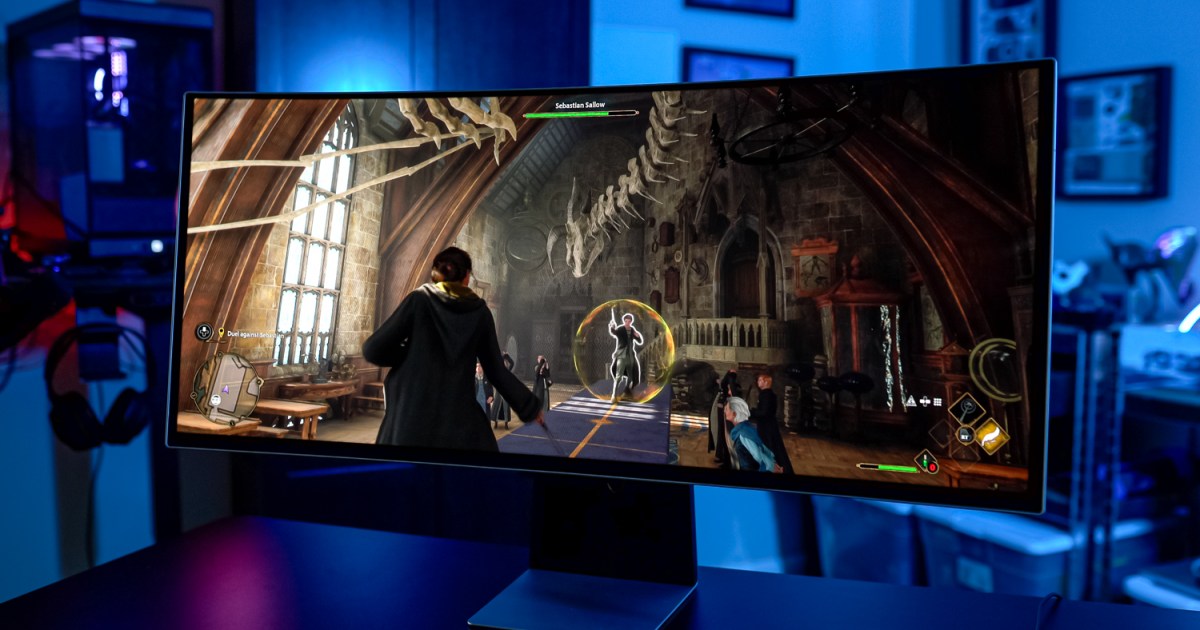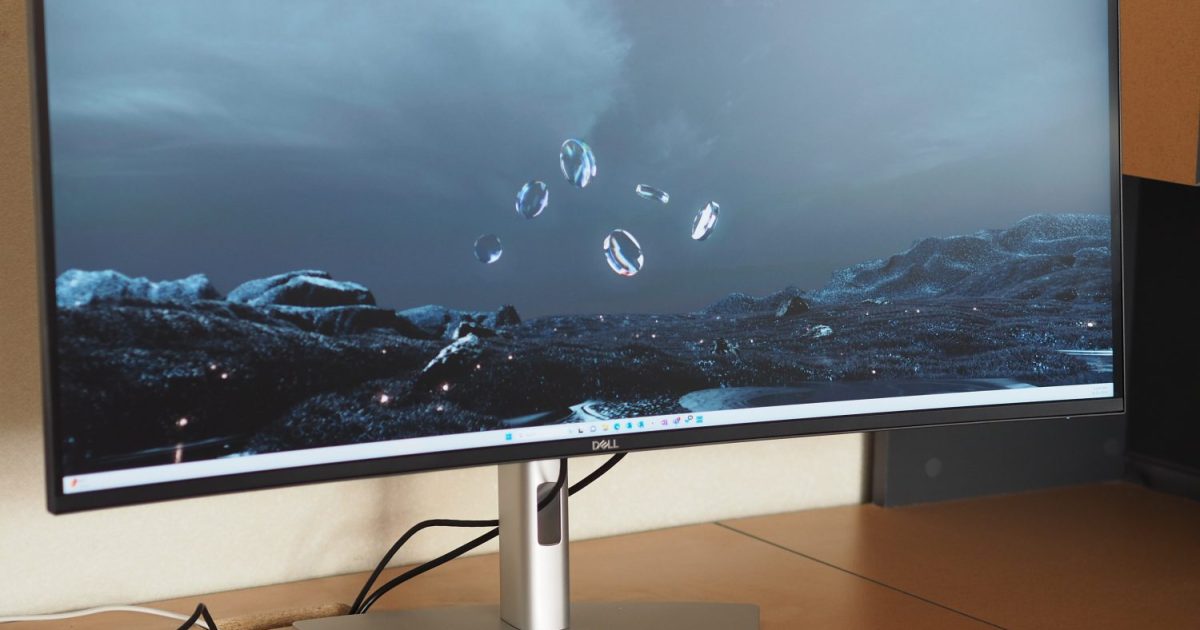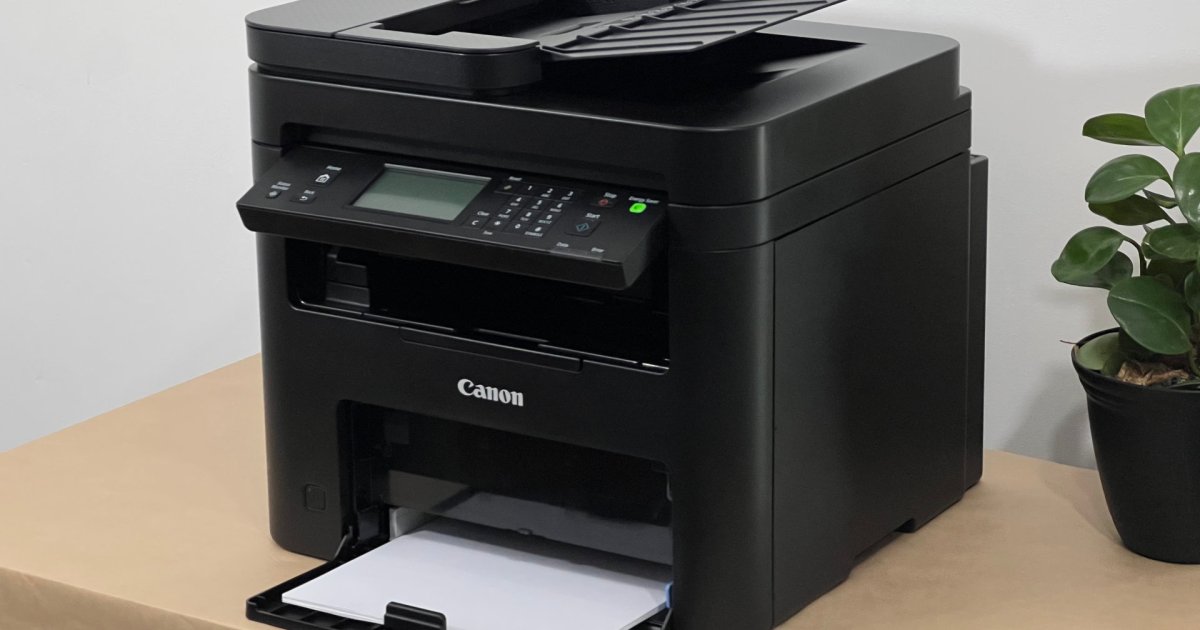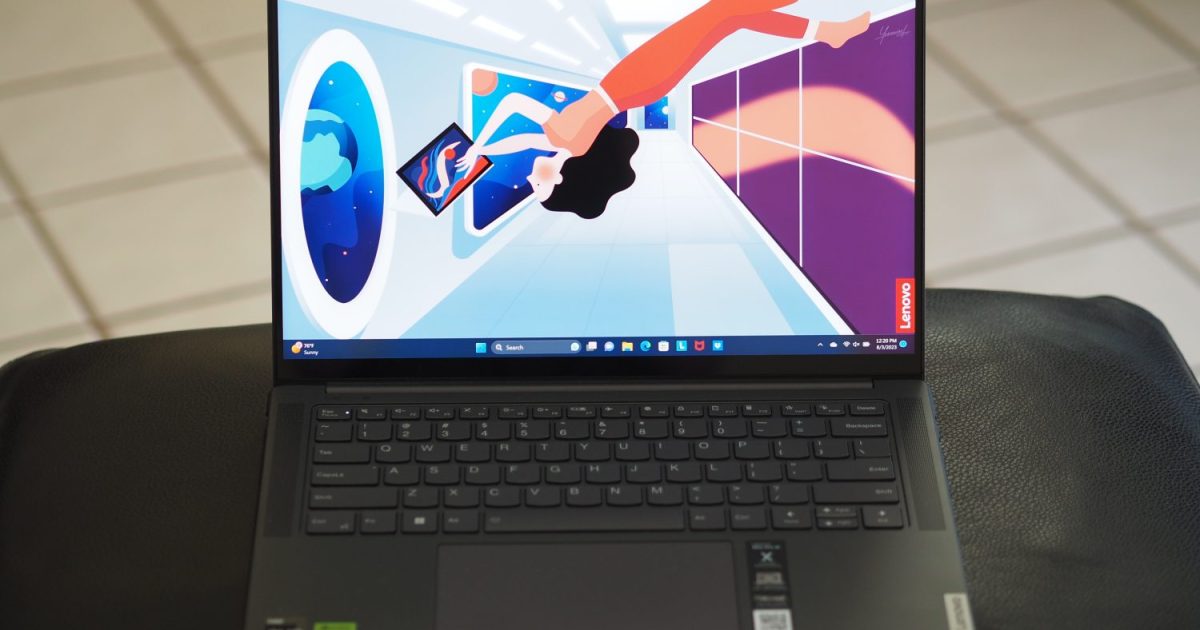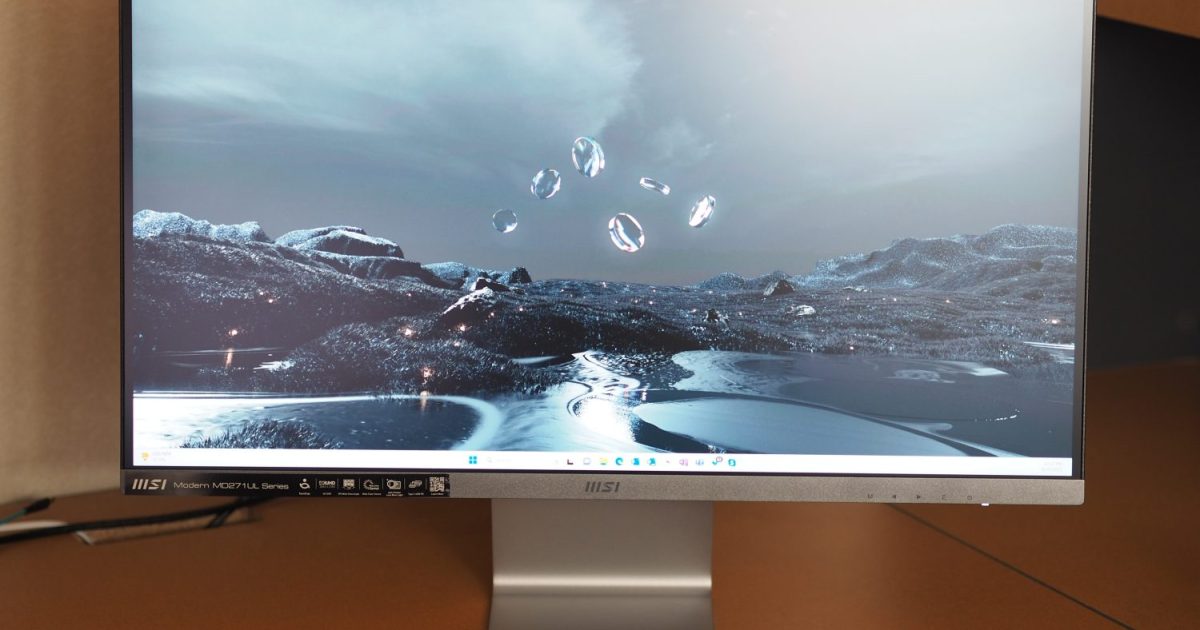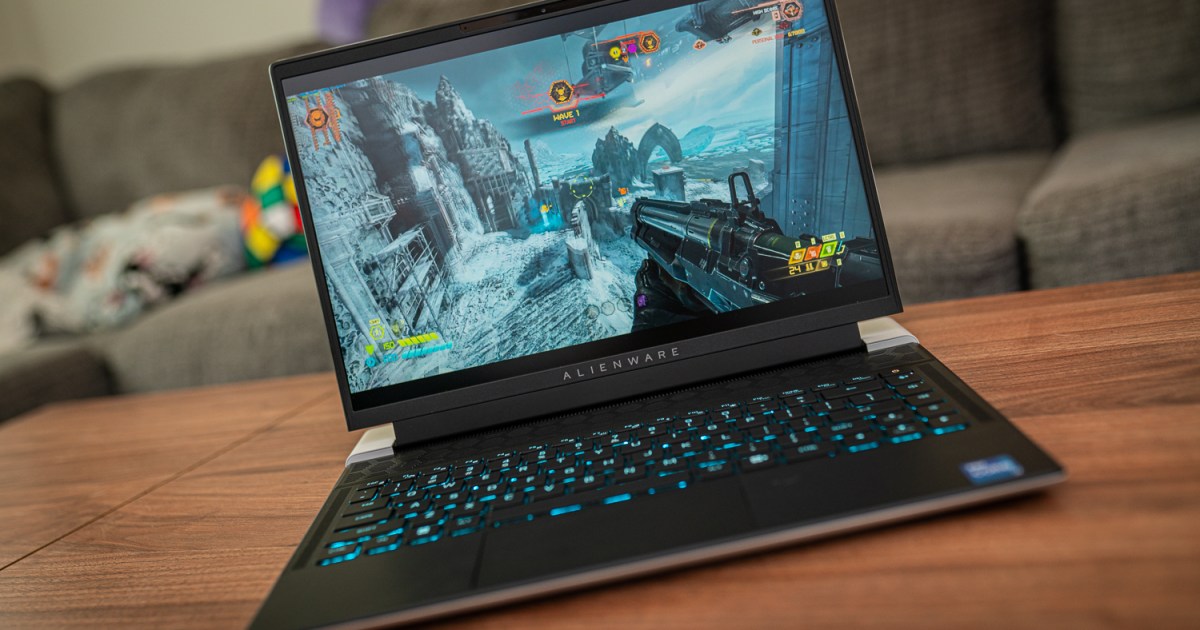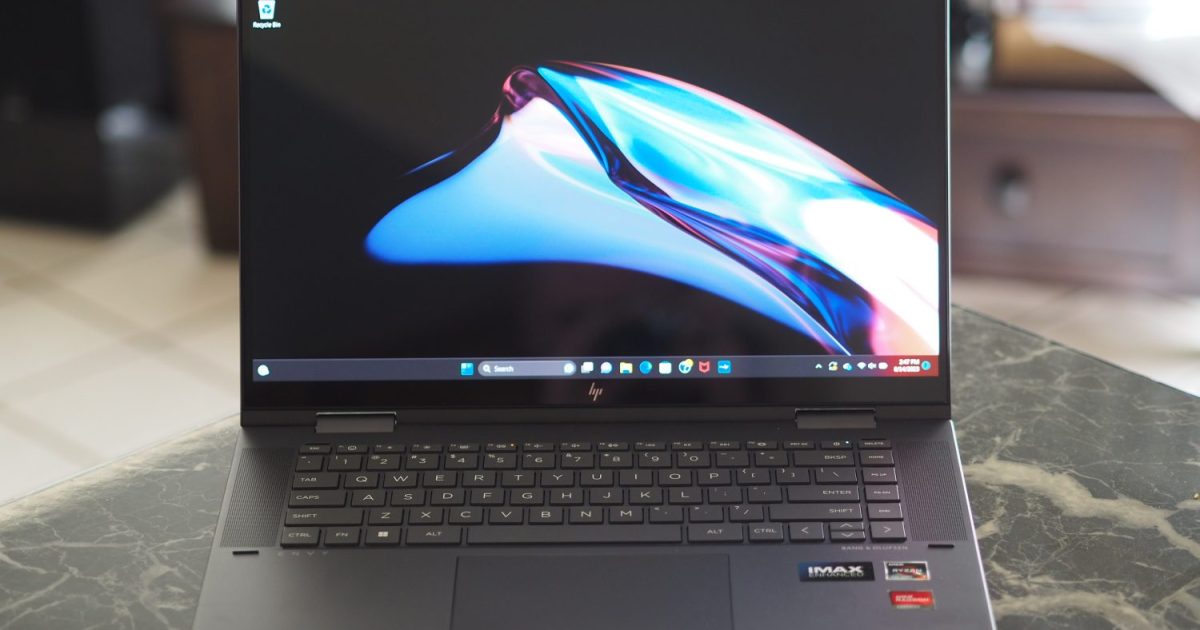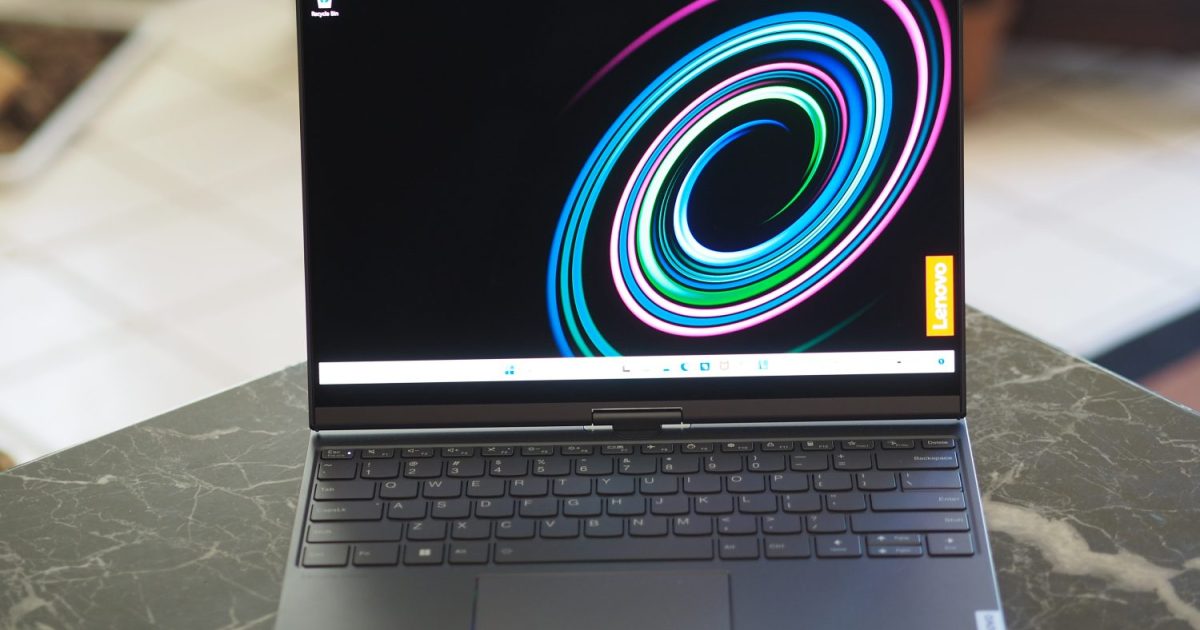I initially doubted the Samsung Odyssey OLED G8’s success. Launching late and priced higher than comparable displays, I anticipated it would struggle despite its impressive image quality. I was mistaken.
While not worth its initial MSRP, the Odyssey OLED G8 distinguishes itself through its software features and sleek design. Its vibrant colors, among the best I’ve seen, and minimalist aesthetic make it a compelling option, justifying a reasonable premium.
Video Review
[Insert Video Embed Code Here]
Samsung Odyssey OLED G8 Specifications
| Feature | Samsung Odyssey OLED G8 |
|---|---|
| Screen Size | 34 inches (21:9) |
| Panel Type | QD-OLED |
| Resolution | 3440 x 1440 |
| Peak Brightness (SDR) | 250 nits |
| HDR | DisplayHDR True Black 400 |
| Local Dimming Zones | 4,953,600 |
| Contrast Ratio | 1,000,000:1 |
| Response Time | 0.03ms (GtG) |
| Refresh Rate | 175Hz |
| Curve | 1800R |
| Speakers | Yes |
| Inputs | Mini-DisplayPort 1.4, Micro HDMI 2.1, 2x USB-C (65W Power Delivery) |
| List Price | $1,500 |
Striking Design and Minimalist Aesthetics
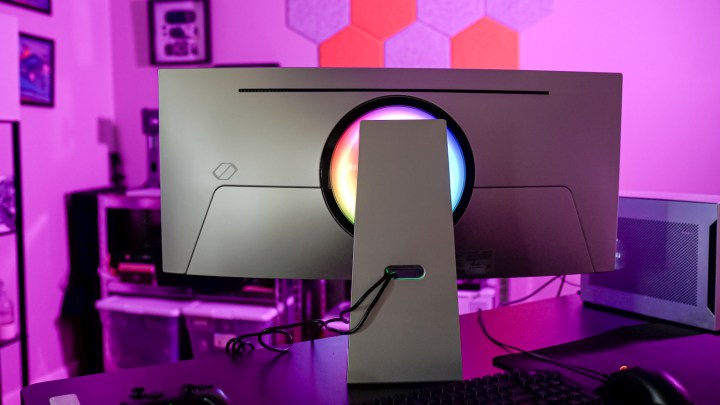
Samsung’s gaming monitors have always been stylish, but the OLED G8 elevates their design philosophy. It seamlessly blends minimalism with gaming flair. The CoreSync lighting subtly enhances the silver back panel, while the streamlined stand maximizes desk space and provides cable management.
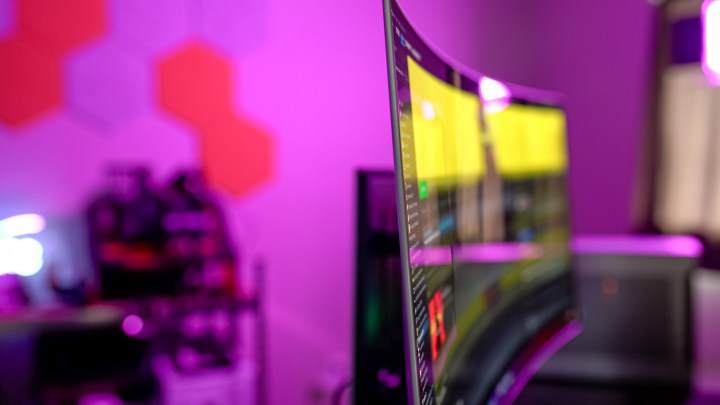
The OLED G8’s thinness is remarkable. Unlike other large OLED gaming monitors with bulky rear compartments, Samsung has achieved a sleek, almost impossibly thin profile. The front complements this with minimal bezels, creating a seamless visual experience.
Port Selection: A Minor Drawback
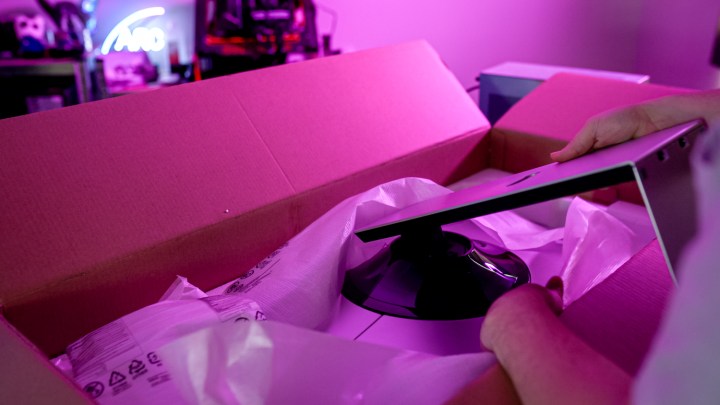
Setup is straightforward thanks to the monitor’s slim design and efficient packaging. The stand attaches easily, although two screws are required for the base. While not entirely tool-less, it’s a minor inconvenience. The stand itself is robust, offering height and tilt adjustments, but lacks pivot and swivel. A VESA mount option is available.
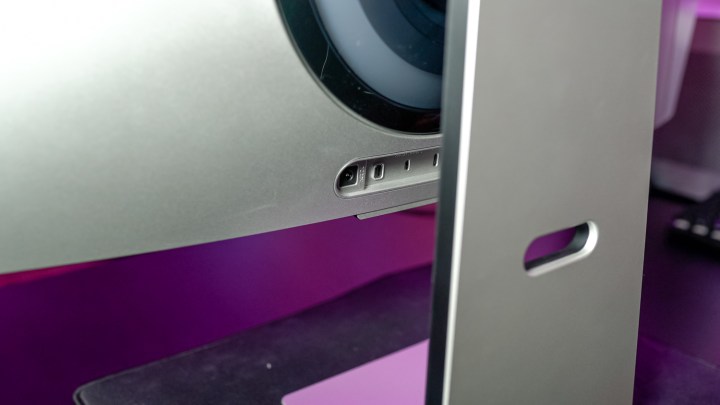
The port selection is a drawback. While offering DisplayPort 1.4, HDMI 2.1, and two USB-C ports with 65W power delivery, the use of Mini-DisplayPort and Micro HDMI is puzzling. While a Mini-DisplayPort to DisplayPort cable is included, a Micro HDMI cable is not, a surprising omission for a premium monitor. The lack of additional USB ports or a headphone jack limits its hub functionality, although built-in Bluetooth partially mitigates this.
Exceptional QD-OLED Display Performance
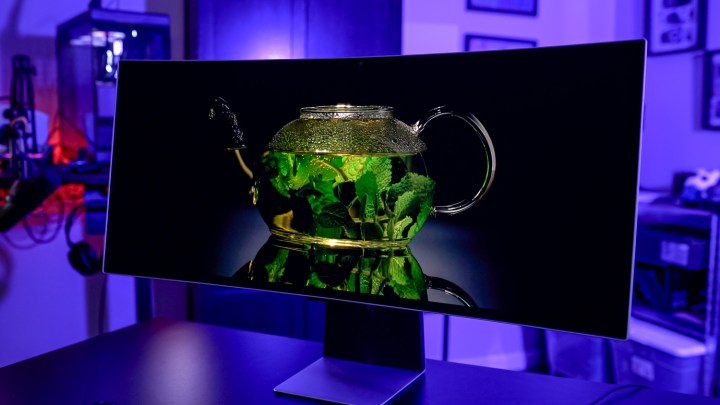
The OLED G8 utilizes the same panel as the Alienware 34 QD-OLED, delivering impressive visuals. Perfect blacks, vibrant colors, and excellent SDR color coverage (100% sRGB, 99% DCI-P3, and 94% AdobeRGB) make it a standout performer. Color accuracy is excellent at full brightness, with a Delta E of 0.8.
The typical OLED weakness of lower peak brightness is present, reaching 248 nits in SDR. While comparable to other OLED monitors, maintaining near-maximum brightness is recommended for optimal color accuracy, which diminishes at lower brightness levels.
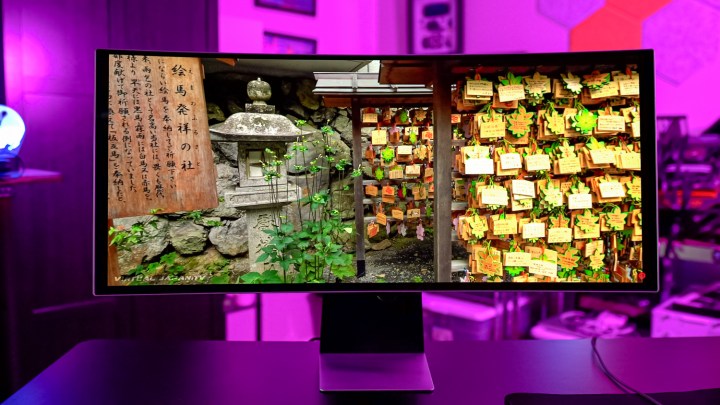
QD-OLED’s inherent text fringing is present but minimally noticeable. OLED’s burn-in risk remains a factor for extended desktop use, though typically not a major concern. HDR performance is strong, with peak brightness exceeding SDR and impressive highlight performance. While HDR color accuracy is expectedly lower, ample customization options are available.
Immersive Gaming Experience
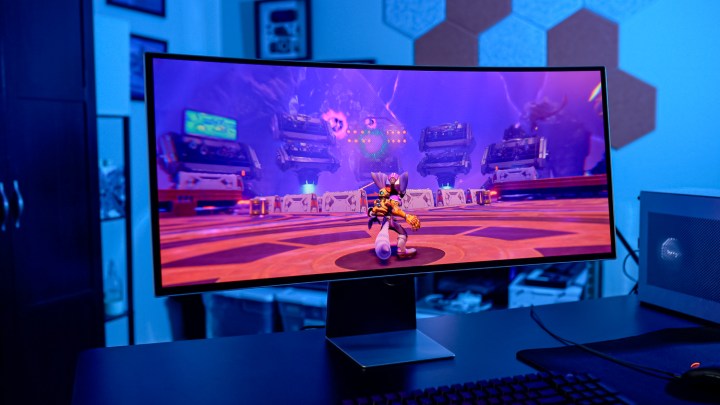
OLED gaming monitors provide a compelling experience, and the OLED G8 is no exception. The combination of stunning HDR, rapid response times (sub-1ms in real-world use), and a 175Hz refresh rate delivers exceptional motion clarity. The 21:9 ultrawide aspect ratio enhances immersion in games like Cities: Skylines and Ratchet and Clank: Rift Apart.
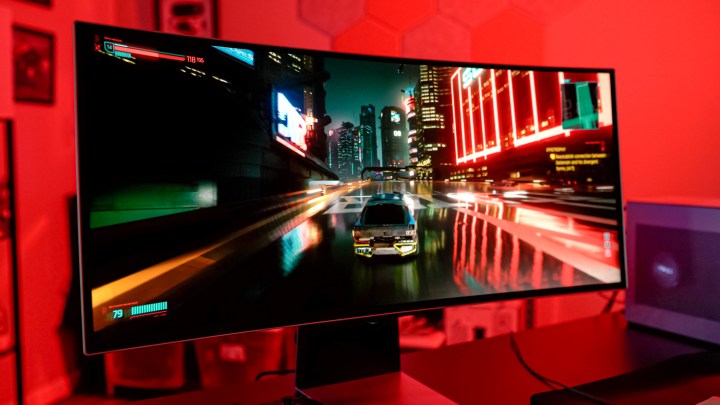
HDR gaming on the OLED G8 is a highlight, with titles like Cyberpunk 2077 and Marvel’s Spider-Man showcasing its strengths. Even with HDR disabled, the perfect blacks deliver excellent contrast. While other QD-OLED monitors offer similar experiences, the OLED G8 competes effectively.
Tizen OS: More Than Just Streaming Apps
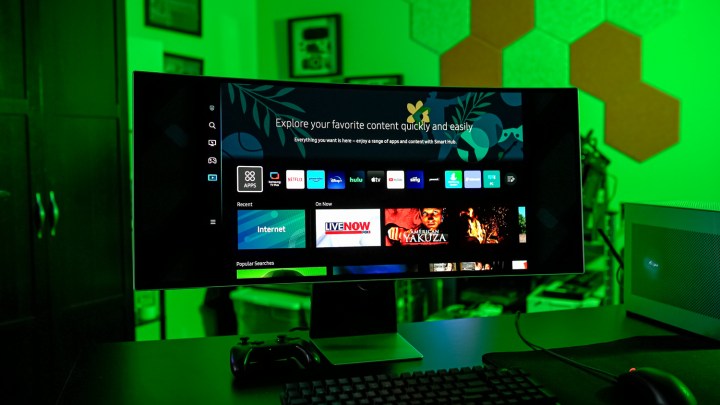
The OLED G8 integrates Samsung’s Tizen OS, similar to the Smart Monitor M8. This enables streaming apps like Netflix and YouTube, along with Samsung’s TV Plus and Game Hub, offering cloud gaming services like Xbox Game Pass and GeForce Now. While not essential for a gaming monitor, these features are a welcome addition.
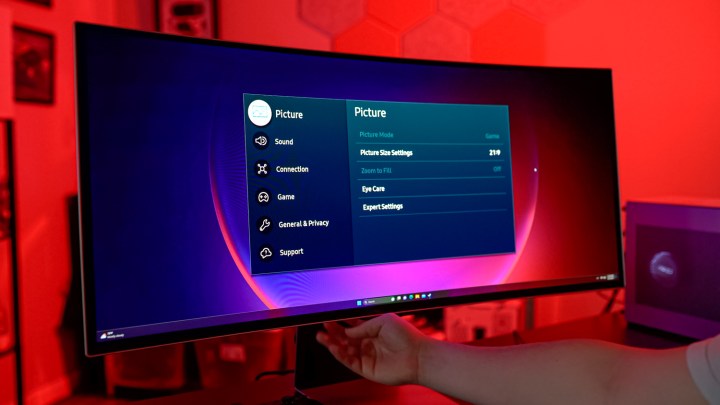
The Tizen OS’s real strength lies in its added functionality. Built-in Bluetooth and Wi-Fi allow for direct software updates and wireless connectivity. Apple AirPlay support facilitates content streaming without a PC. Navigation is flexible, with options including a remote, joystick, and smartphone control. Samsung’s Smart Calibration via smartphone simplifies color adjustments. Bluetooth connectivity extends to audio devices, enhancing the built-in speaker experience.
Premium Features Justify the Price
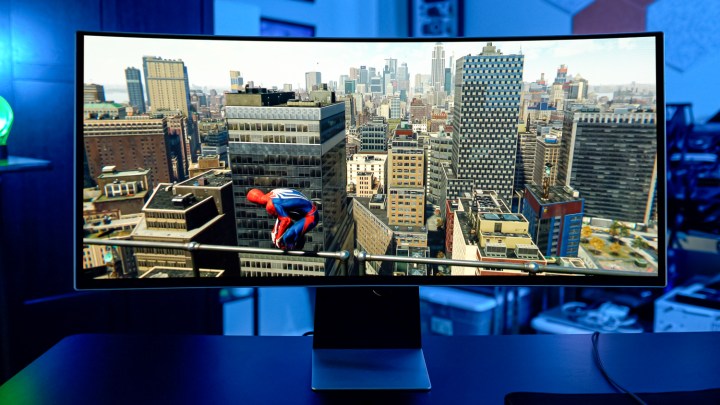
The OLED G8’s initial $1,500 price was a concern. However, its features and build quality justify a premium over competing QD-OLED monitors like the Alienware 34. The Tizen OS and refined design contribute to this value proposition. With current street prices often lower than the MSRP, the OLED G8 offers a compelling, albeit premium, gaming monitor experience. The choice between the Alienware 34 and the OLED G8 depends on individual priorities and pricing, with the OLED G8 offering additional features for a higher cost.



